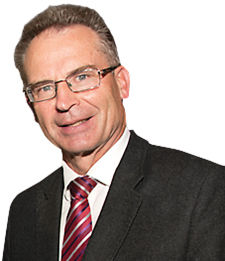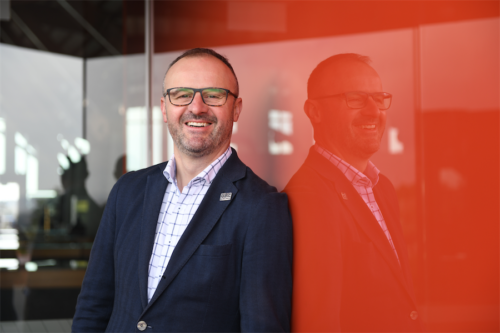
“The Taxation Review found that, when combined with all possible infill options, there was capacity for additional housing for about 100 years of population growth at current rates of population increase,” writes JON STANHOPE.
A PERVERSE outcome of the ACT government’s fixation with high-rise development and its almost frantic rush to densify Canberra will almost certainly be that the ultimate population of Canberra will be much higher than ever envisaged.

The government has, as we all know, over the last six or so years reversed the proportion of land being released for detached housing as opposed to attached housing from roughly 70/30 in favour of detached or separate housing to a similar ratio in favour of attached housing i.e. townhouses and flats.
It has not just encouraged but has driven the change to multiple 20-plus storey apartment buildings becoming the norm.
The Chief Minister, Andrew Barr, has explained the rapid pace of this change as a reflection of the government’s determination to prevent the city of Canberra sprawling inexorably to the borders.
He is on the record as suggesting that if we do not contain urban sprawl that we risk running out of land in the 2030s or, in other words, in the next 20 years or so.
To be fair, the Chief Minister did explain later that he had decided that the Kowen Plateau, in the east of the ACT’s border with NSW, would never be developed for housing. I am assuming, when he made that announcement that he meant that Kowen would not be developed while ever he was chief minister, but nevertheless if Kowen is not developed we certainly would run out of developable land much earlier than otherwise.
It would be interesting to know the basis of the decision to not develop the Kowen area. I am prepared, in any event, to bet London to a brick that it is a decision which will be reversed the minute there is a change of either chief minister or government in the ACT.
Fifty or so years ago, when the NCDC was involved in detailed planning for the implementation of Canberra’s “Y Plan” it looked closely at the possible future land and infrastructure needs of the national capital.
It is instructive to revisit the planning work that the NCDC did, before self-government. Much of the then thinking remains relevant, perhaps more so now than ever.
I have recently had occasion to discuss and correspond with a past commissioner of the NCDC, Mr Tony Powell, about the NCDC’s thinking on some of the issues, including the desirability of expanding the ACT’s borders to accommodate anticipated population growth, future development of the Kowen Forest area and cross-border development generally.
Pertinently, Mr Powell advised me that in early planning work by the NCDC for the city it had assumed a population of 200,000 for the Kowen area.
He also told me that the NCDC had identified the area in NSW to the immediate east of the Kowen Forest as particularly well suited for future urban expansion because of its configuration and ease of access etcetera. It is also notable that the major centres of employment in Canberra are more easily accessed from the east than the west.
Mr Powell also commented that because of recent planning changes to the ratio of detached to unattached housing and the move to multi-storey apartment blocks that the Kowen Plateau might possibly be expected, in the future, to house up to 300,000 people.
It was this comment of Mr Powell, namely that in the space of a few years the anticipated population of a discreet, greenfield, urban-capable area of the ACT may have increased, due to a seemingly innocuous change in a planning policy, by one half from 200,000 to 300,000, that first caused me to think about some of the longer-term implications of planning and land supply decisions being taken by the current ACT government and to wonder about the evidence or thinking that underpinned those decisions.
The most recent credible examination of the amount of potentially developable land in the ACT and its relationship to population growth was undertaken by the Taxation Review in 2011.
What that study revealed is that on the basis of the then statement of planning intent of 50 per cent of housing in greenfield sites and 50 per cent infill there was enough developable land in the ACT for an extra 153,000 dwellings in greenfield sites alone.
The Taxation Review found that, when combined with all possible infill options, there was capacity for additional housing for about 100 years of population growth at current rates of population increase.
A summary of the Taxation Review’s assumptions, methodology and findings on this, including on the related issue of the implications of cross-border development for the ACT’s finances, are at pages 39 to 42 of the review.
I understand that the Taxation Review analysis had assumed that the Kowen Plateau would eventually be developed. As an aside, if as suggested by Tony Powell, the Kowen Plateau may have the capacity to house 300,000 people, that would assume a minimum of 100,000 dwellings. A rough estimate of the return to the ACT government on land to support 100,000, or possibly more dwellings would be somewhere in the order of $12 billion to $15 billion. This level of return would almost certainly be net of the infrastructure costs and, in any event, the cost of the trunk infrastructure would be a fraction of the returns, leaving aside the social and economic benefits.
A few of the questions begged by all this are:
- What is the basis of the Chief Minister’s statement that the ACT will run out of developable land in the 2030s?
- Why, if there is enough developable land in the ACT for 100 years of population growth at current rates of growth, has the ACT entered into a contract to build 5500 houses in NSW?
- What progress has the ACT government made in negotiations with the NSW and Commonwealth governments to extend the ACT border?
- What is the basis of the decision by the government to not develop the Kowen Plateau?
Who can be trusted?
In a world of spin and confusion, there’s never been a more important time to support independent journalism in Canberra.
If you trust our work online and want to enforce the power of independent voices, I invite you to make a small contribution.
Every dollar of support is invested back into our journalism to help keep citynews.com.au strong and free.
Thank you,
Ian Meikle, editor




Leave a Reply